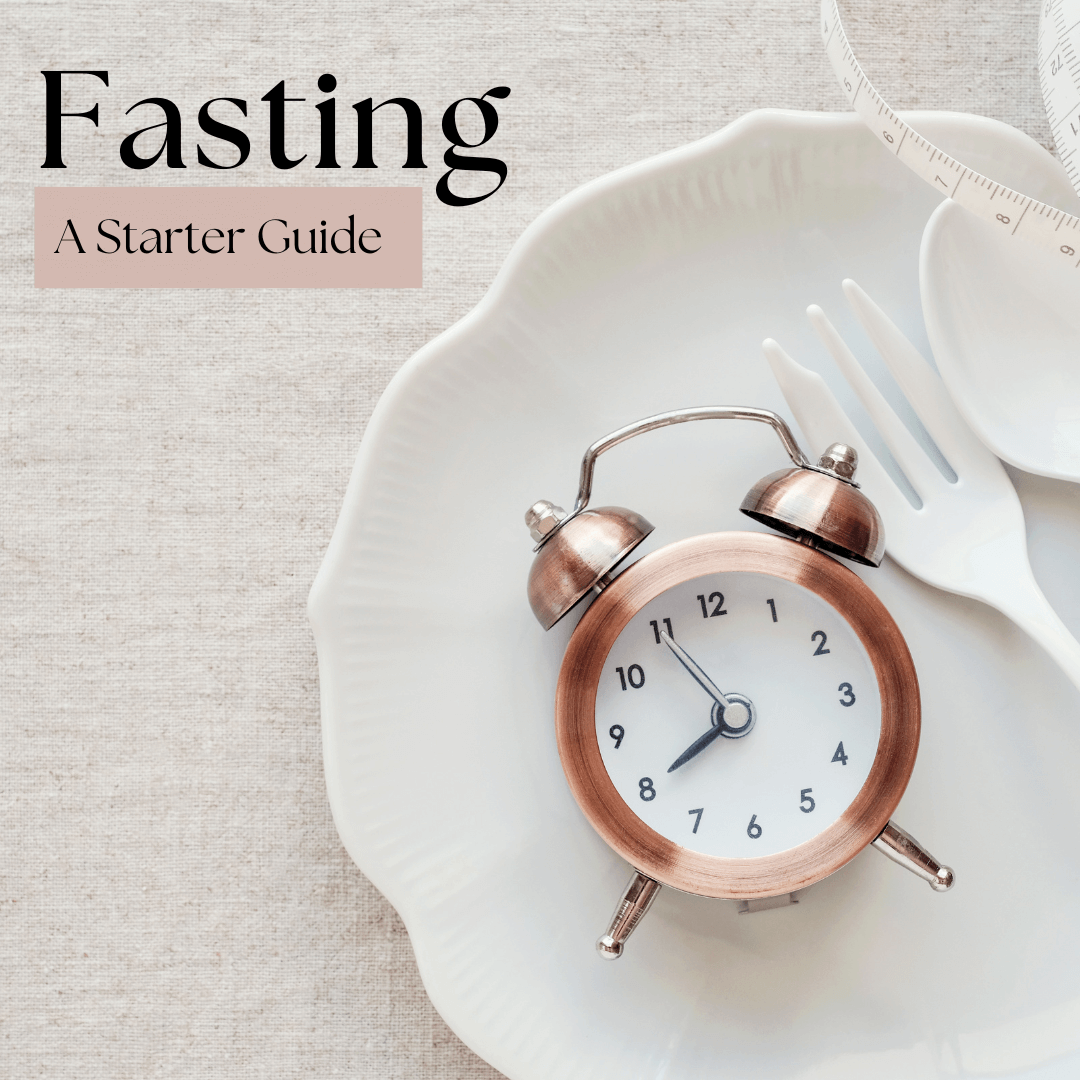Fasting Fundamentals
November 4, 2024

In a world where food is always within reach, the practice of fasting is gaining momentum for its potential health benefits, ranging from weight loss to improved cellular health. But fasting isn’t just about skipping meals; it’s about aligning with our body’s natural rhythms and enhancing our overall wellness. Whether you’re new to fasting or looking to fine-tune your approach, this guide will walk you through the fundamentals of fasting, the types of fasting to consider, and common pitfalls to avoid. Let’s dive into the world of fasting and uncover why it could be a game-changer for your health journey.
1. Why Fast? The Science and Benefits Behind It
Our bodies are biologically programmed to fast. Historically, food wasn’t as readily available, so fasting was a natural part of daily life. Today, the endless availability of food has led many to overeat, which disrupts our natural metabolic processes and can lead to weight gain, hormone imbalances, and chronic health issues.
Fasting allows our bodies to recalibrate and tap into several key benefits:
- Hormone Balance: For women especially, fasting done right can support hormone regulation by giving the body structured eating windows.
- Weight Loss: Fasting helps the body shift from glucose (sugar) to stored fats as an energy source, aiding in weight loss.
- Cellular Repair: Fasting encourages autophagy—a cellular “clean-up” process—where the body clears out damaged cells, supporting longevity and disease prevention.
- Brain Health: Fasting can stimulate ketogenesis, which supplies the brain with a steady energy source, potentially supporting cognitive health and reducing risks of conditions like Alzheimer’s.
- Gut Health: Taking a break from constant digestion supports a balanced gut microbiome, which is crucial for immune function and overall well-being.
2. Types of Fasting to Consider
The world of fasting offers several approaches, each with its unique rhythm and benefits. Here are a few popular ones:
- 16:8 Fasting: Fast for 16 hours and eat within an 8-hour window. This method is manageable, aligns with most daily schedules, and promotes weight loss and energy balance.
- 5:2 Fasting: Eat normally for five days, and for two days, restrict your caloric intake to around 500-600 calories. This approach can be a useful boost for cellular repair (autophagy) but may not suit everyone, especially those with energy-intensive routines.
- Extended Fasting: Going 24+ hours without food allows for deeper cellular repair and a stronger shift to fat metabolism. However, this is best for those who have already acclimated to shorter fasts and should only be done occasionally.
For beginners, starting with the 16:8 or even a 12-hour fasting window (eating for 12 hours and fasting for 12) can provide a smooth transition into fasting without overwhelming the body.
3. Common Mistakes to Avoid
Fasting can be transformative, but only if done correctly. Here are some common pitfalls that can derail your fasting journey:
- Jumping In Too Quickly: If you’re new to fasting, diving into a long fast can be counterproductive. Start small, perhaps with a 12-hour fast, and gradually increase your fasting window over time.
- Poor Hydration: Fasting triggers detoxification processes, making adequate hydration essential. Aim for half your body weight in ounces of water daily, and consider adding lemon to support detoxification and aid digestion.
- Nutrient-Poor Breaking of the Fast: The way you break your fast is crucial. Avoid sugary cereals or processed foods that lack nutritional value. Instead, go for protein-rich foods, healthy fats, and nutrient-dense vegetables, like a meal with eggs, avocado, and greens, to give your body the quality fuel it needs.
- Overeating: Avoid binge eating after fasting. Breaking your fast gently with small portions, such as a broth or a light salad, allows the digestive system to ease back into work.
- Ignoring the Body’s Signals: Fasting is powerful but can be demanding on the body. Signs like dizziness or extreme fatigue indicate that you might need to pull back or adjust your fasting style. Listening to your body is vital to reap the benefits without strain.
4. Maximizing Your Fasting Experience
To get the most from fasting, balance it with these key lifestyle practices:
- Sleep: Proper sleep is essential to allow for cellular repair and hormone regulation. Aim for 7-8 hours a night, and try to maintain a regular sleep schedule.
- Exercise: Light exercise, such as walking or yoga, can support your fasting process. Avoid intense workouts during extended fasts, but feel free to maintain your normal routine during shorter, daily fasts.
- Mindful Stress Management: Fasting can slightly elevate stress on the body, so counterbalance it with stress-relief practices like meditation, prayer, or spending time outdoors.
5. A Balanced Approach to Fasting
While fasting offers numerous health benefits, it’s not a one-size-fits-all solution. If your goal is weight loss, focus not only on fasting but also on building sustainable habits that train your body to draw energy from fat stores and maintain hormonal balance. Remember, fasting is just one tool in the broader journey to wellness.
Conclusion
Incorporating fasting into your routine can be a powerful step toward achieving your health goals, from hormone balance and cellular repair to weight management and improved gut health. Remember, it’s about creating a balance that works for your unique needs. Take it slow, listen to your body, and focus on nourishing yourself during eating windows. Fasting is not a trend but a time-tested practice, and with a mindful approach, it can become a valuable part of your wellness journey.
Happy fasting!

This smoothie bowl is filled with healthy fats, fiber, and greens to keep you feeling balanced and refreshed post-fast. It’s quick to make and provides an energy boost without spiking your blood sugar.
Ingredients
1/2 avocado
1 cup fresh spinach
1/2 cup unsweetened almond milk (or any dairy-free milk you prefer)
1 scoop of Dr. Cherine’s Primal Complete Lean Protein (vanilla or chocolate)
1/4 cup frozen berries (like blueberries or raspberries)
1 tbsp chia seeds
Optional toppings: Sliced almonds, coconut flakes, or a sprinkle of cinnamon
Instructions
In a blender, combine avocado, spinach, almond milk, protein powder, frozen berries, and chia seeds. Blend until smooth and creamy.
Pour the smoothie into a bowl and add your favorite toppings. Try sliced almonds for a bit of crunch or coconut flakes for added healthy fats!
Enjoy slowly to savor the flavor and help your body ease into digestion.
